Industry Leader Forecast
If only we were able to see into the future, we would all be prosperous and free of disastrous surprises. But, since we can’t, we can take educated guesses, which is what some of the of our industry leaders have done in Lawn & Garden Retailer’s first annual Industry Leader Forecast. From economic changes to customer buying habits to customer service, find out what they foresee for 2003.
Judy Sharpton, owner Growing Places Marketing Atlanta, Ga.
In the past few years, industry publications have been filled with articles about the new Tajma-garden centers. Glowing prose describes the appointments of large and I do mean large independent garden centers. Double-page spreads document soaring entries, sweeping display gardens, restaurants, special event areas and Victorian solariums. These new structures are impressive, and I certainly hope they successfully raise the bar on product presentation. After all, one way to increase the perceived value of a product is to place that product in a magnificent showroom.
I have only one worry that these structures are too big to serve either product presentation or consumer buying habits. Such structures are almost impossible to keep clean, stocked and staffed for the 12-month selling season required to justify the investment. And then there’s the 22-minute average shopping event documented in the ANLA Grapevine Study. Given that statistic and the other evidence we have on the time-constrained consumer, I wonder how fully or how often she will shop these large stores.
In her landmark book, The Not So Big House, Susan Saranka established a new paradigm for home design with the emphasis on detail and livability as opposed to size. While the Tajama-garden centers have taken the industry spotlight, I have observed a number of garden centers developing more inviting shopping areas in smaller and more shoppable spaces. In some cases, these garden centers have collapsed existing retail space while separating retail from production. Based on the growth in smaller, specialty retailers like Whole Foods and the success of smaller versions of such mega retailers as Home Depot and Lowes, I suggest the “not so big garden center” could be a real force for sophisticated product presentation and consumer appeal in 2003.
PJ Ellison, president Ellison’s Greenhouses Inc. Brenham, Texas
What an exciting and challenging time the year 2003 will be for all of us! True plant lovers and gardeners will continue to make gardening the number-one hobby in America. Their need to feel the earth, create and connect will again be strong, as uncertainty will be the norm for 2003.
From the industry standpoint, 2003 will be the best year for some and the worst for others. If garden centers and growers compete on a playing field out of their league and resources, it will be a very financially tough year. The shakeout will continue. For those that compete with quality, knowledge, variety and service, it should be a very good year. These businesses will need to continue to truly understand and meet the needs and wants of their customers. They will also need to be in tune and compliance with water issues, labor shortages and an uncertain economy.
As in every economy or challenge, someone is going to lose money and someone is going to make money. I, for one, plan on being in the group that makes money.
Brian Wheat, CEO Lafayette Florist Gift Shop and Garden Center Lafayette, Colo.
I do wish I had a crystal ball to predict the future because it would have helped me see that the 2002 gardening season in our area of Colorado would be a bust due to the worst drought conditions in 100 years. The impact was devastating on our green industry. This, coupled with record-high summer heat and heavily enforced drought restrictions, caused our garden center and greenhouses to take on a whole new direction and purpose.
As we put that behind us and look to the future, the outlook seems a little brighter. Our city has secured new avenues of water and will be working with us to educate gardeners on low water-/drought-tolerant plants, along with better watering techniques and water-saving products. The Garden Centers of Colorado has put together a promotional program to help deal with this now and in the future. The X-citing, X-rated, Xeriscape Campaign will feature cable TV ads, radio spots, direct-mail postcards, point-of-sale signage, plant tags, newspaper attention, tee shirts and buttons to help educate customers on flowers and plants listed by their drought tolerance level with X, XX and XXX ratings.
By promoting Xeric plants, gardeners will be assured to enjoy blooming flowers, even during water-restricted times. March will be Education Month at Lafayette Florist, with the emphasis not only on drought solutions, but all aspects of floral wants and needs. So, with adequate snow/rainfall in our mountains, the information and education of our customers, a rebounding economy, a talented and helpful sales force, the perfect product mix and a heck of a lot of hard work and luck, hopefully the 2003 season will be a winner.
Bob Borta, vice president Henri Studios Wauconda, Ill.
For over a year now, consumer trend analysts have been noting an undercurrent of a return to essential values. For Americans, this may take the form of family or home, or an even more basic return to a sense of overall simplicity. These are key cultural themes that will maintain momentum into 2003.
The garden center industry is perfectly positioned in that regard. It is not a matter of exploiting a national mood; rather, it is about fulfilling consumers’ needs. With a heightened focus on the home and on family activities, people will naturally turn to their garden centers for the plants and products that will enhance their outdoor environments and day-to-day lives. In addition, after three years of a depressed stock market, consumers are willing to invest money in their homes, their “safe havens.” Landscape and garden products are a logical extension of this desire.
The garden center industry’s greatest challenge is to serve this need with premium quality products and attractive prices. In other words, to offer value in an era of values.
Value at retail is enhanced by one more aspect expertise. In this area, independent garden centers excel with a level of knowledge in both green and hard goods that is incomparable in other retail venues. Consumers need and want this professional direction, and a knowledgeable staff coupled with informative, imaginative displays helps make the garden center a true and reassuring destination.
For the independent garden center, this is the ultimate value component.
Tom Demaline, president Willoway Nurseries Avon, Ohio
The feedback our sales staff heard this fall while they were out booking spring orders was a similar message from many of the independent garden centers that we supply: They agree that good, fresh-quality product in bloom sells. Their biggest challenge will be to do a better job managing their inventory so they have the right products at the right time and that it continues to turn throughout the season. To accomplish this, many independent garden centers are changing their buying habits. They felt that loading up on excessive inventories in early spring was not a good decision no matter how good of a deal it was. Many retailers have found that these old buying habits have led to having cash tied up in tired, out-of-bloom product that the consumers did not want until it was on special at the end of the season. To change this old habit, they are considering using more local and regional suppliers and increasing the frequency of deliveries even if the price is slightly higher. This will give them better control of their inventories and the flexibility to adjust for consumer buying trends, weather and overall traffic in an uncertain economy.
The other trend we are seeing is that more independent garden centers are looking for retail-ready products. This would include delivering the plants with good informational picture tags that have a simple format and easy-to-read icons so consumers can easily make their buying decisions. We have also seen a steady increase in retailers wanting their plants pre-priced with the independent garden center’s identity or personal branding on the tag. Over all, our customers are optimistic about spring 2003, and with the right weather across the country over the next six months, 2003 could shape up to be a great one.
John Metzler, chairman Metzler’s Florist & Nursery Columbia, Md.
Last year was a real challenge at Metzler’s. Our year was very soft after a combination of drought conditions and subsequent water restrictions; terrorist and sniper attacks in our neighboring Washington, D.C. area; and a poor economy and threat of war with Iraq. Although it has been theorized that people are staying close to home and doing projects in and around their home during these difficult times, it has not brought them to our garden center for planting material. I believe the overwhelming feeling of insecurity has made our customers very cautious about spending.
Spring 2003, I believe, will be a better time for us, though there are a number of “ifs”… If the Iraq war talk, or war, is behind us; if we keep getting good moisture; if the economy improves by spring.
We believe there is a lot of pent-up garden buying that will hopefully explode in 2003. Metzler’s plans to take full advantage of this, regardless of the “ifs.” If we can do away with some of the “ifs” and get a lot of rain-free, warm weekends in spring ’03, Metzler’s is planning a banner spring season!
We are in a new 5-year improvement and renovation program at our Columbia store. We are also improving and adding to our professional horticultural staffing. We will be spending about $1 million over this 5-year period for major structural changes, large planted display beds, major expansion of our water gardening area, a new irrigation system and more. We are hopeful the improvements will also help our 2003 sales.
Stan Pohmer, president Pohmer Consulting Group Minnetonka, Minn.
Consumer and retail dynamics have changed more in the past 18 months than they have in the past 10 years and that’s both good and bad for the garden center operator.
The 2003 consumers will continue the recent trend in demanding (not asking for!) value for their dollar. There are many different elements of “value”… price value, quality value, solutions providing value, service value, etc., and a combination of many of these elements. Garden centers that try to match the “price value” image and message of the big boxes will sacrifice profit and/or compromise quality to achieve this position.
The challenge that exists for the garden center is in identifying which consumer demographic segment he wants to focus his resources on, identifying the products, programs and services to support this customer, and then consistently marketing to and satisfying the value equation needed to satisfy his targeted consumer.
The “one-size-fits-all” approach that independents were successful with in the past won’t work with the demanding and discriminating consumer in today’s ultra-competitive retail environment. Develop the image and position that will help differentiate you from the boxes, and be consistent in delivering on your value statement to your consumer!
Thomas Hebel, president Bucks Country Gardens Doylestown, Pa.
Predicting the performance of our industry for the coming year is certain to be uncertain. Statements like “it can’t be any more difficult than last year” are part of most of our conversations here in Southeastern Pennsylvania. We have had a tough go of it in many respects, thanks to persistent drought conditions, a stagnant economy and eroded discretionary income, record fall rain and cold, all topped off with the “lost week” between Thanksgiving and Christmas.
We can, however, learn from a year like last to better prepare us for the banner years ahead if we pay attention, and that’s exactly what we are doing. We’re paying attention to our customers, our products and our prices. Customers want more, and that’s what we’re going to give them. To build customer base, we will educate, reward, communicate and personalize the experience more than ever before. To satisfy our customers’ needs, we will supply more of what they want and less of what confuses them, directing their purchases to the products that are best for them and best for us. To make enough profit to do it all again the next year, we will be more competitive where needed to build business, but take advantage of every opportunity to achieve maximum mark-up everywhere else.
The challenge of the coming year for us is the same as it has always been: How do we compete and grow, and can we have fun and make a couple more bucks? We know we can if we pay attention. That’s for certain.




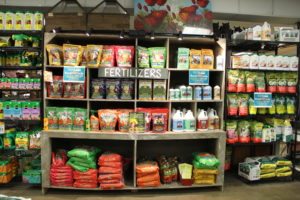
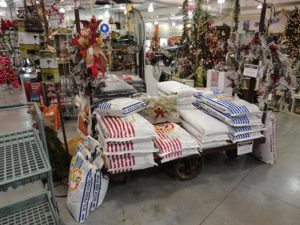

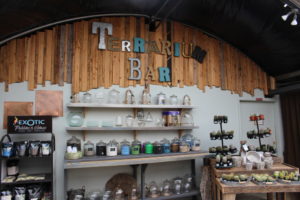
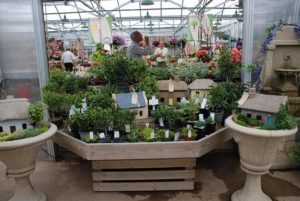
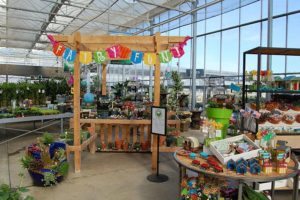
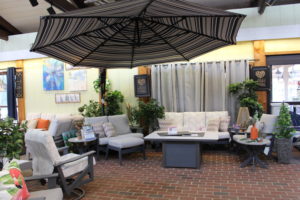
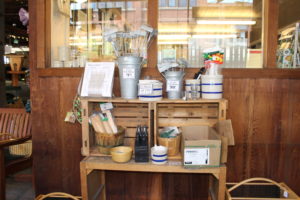
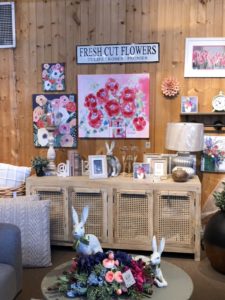
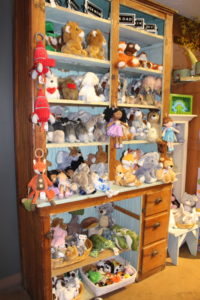


 Videos
Videos





